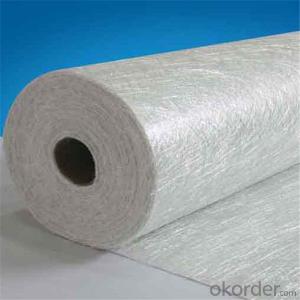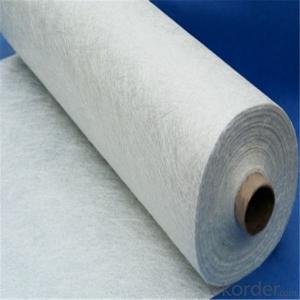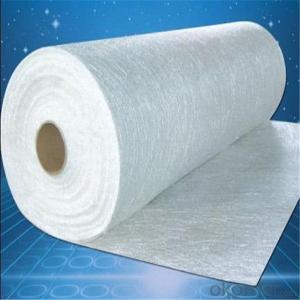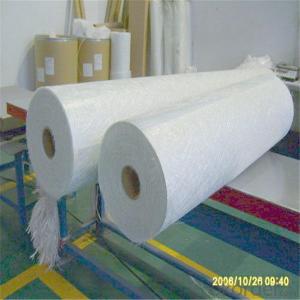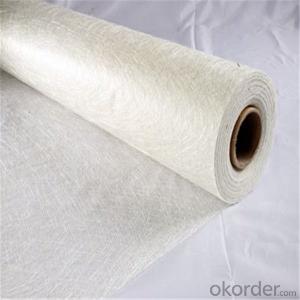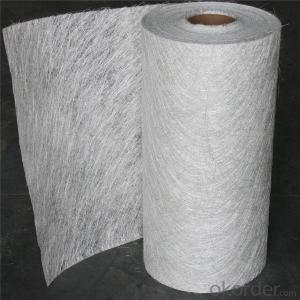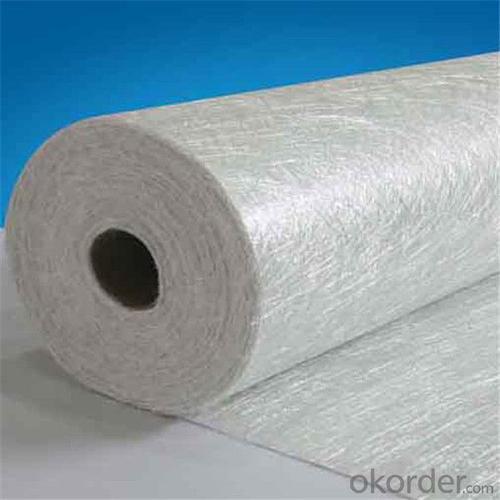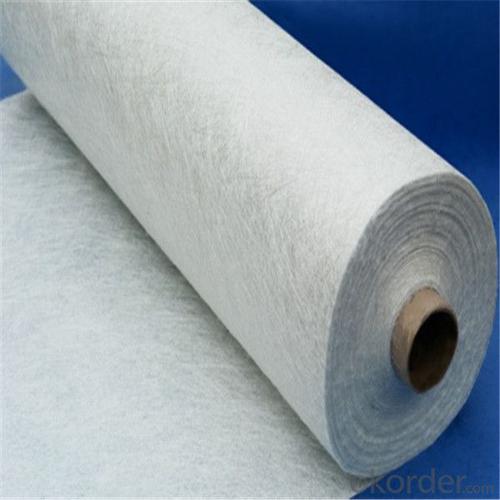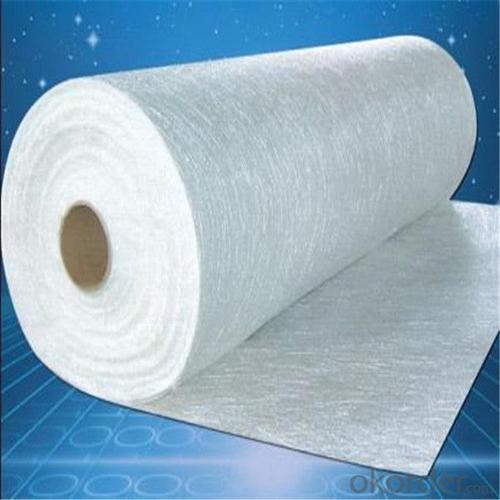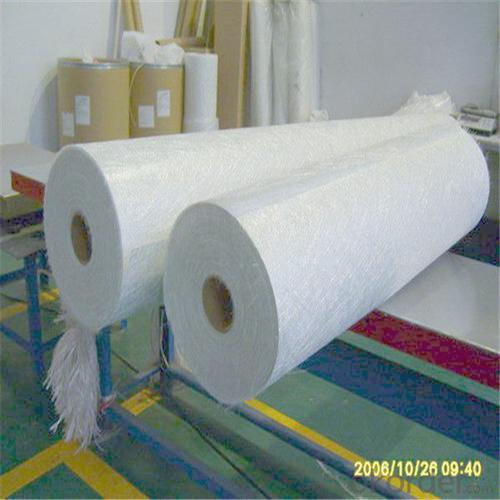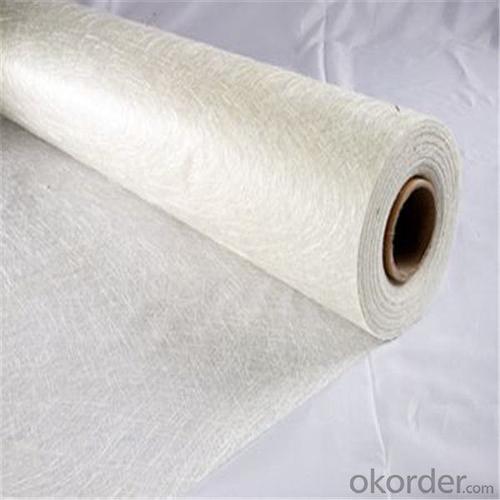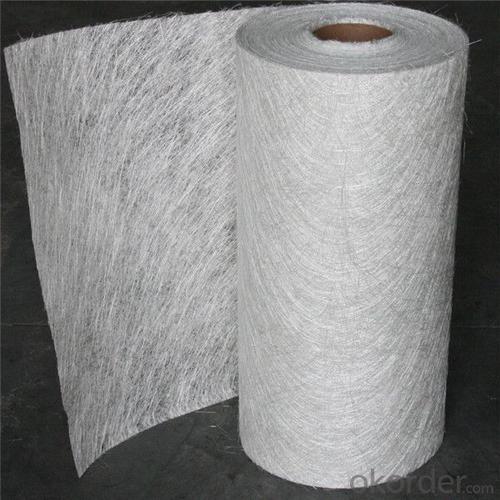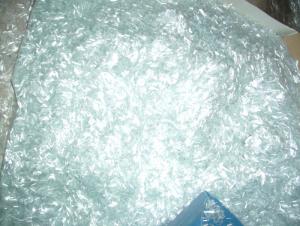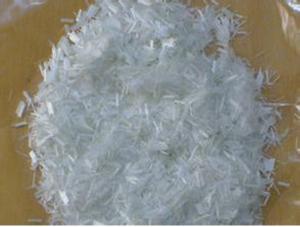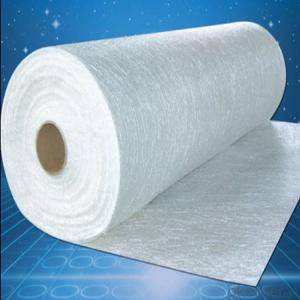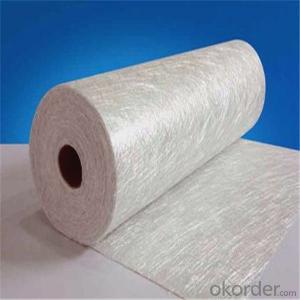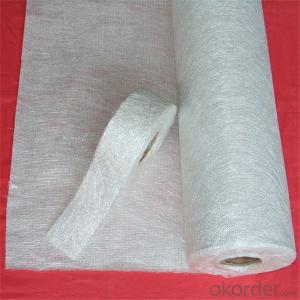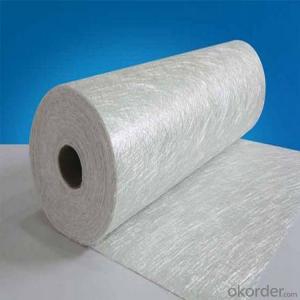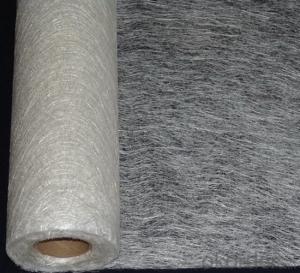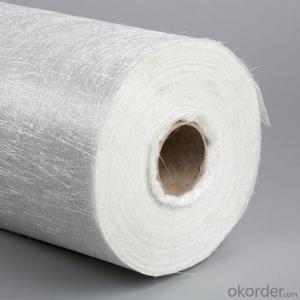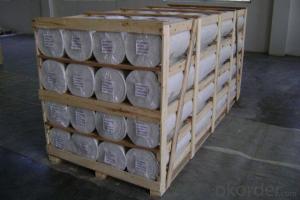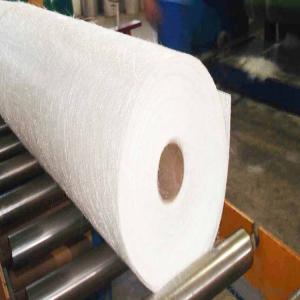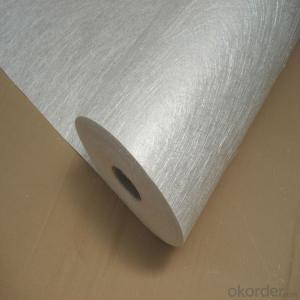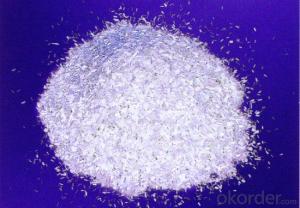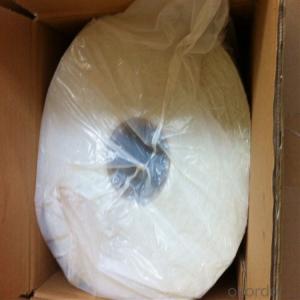Owens Corning Fiberglass Chopped Strand Mat - Roof Panel High Quality 300gsm
- Loading Port:
- Tianjin
- Payment Terms:
- TT OR LC
- Min Order Qty:
- 100 m.t.
- Supply Capability:
- 10000 m.t./month
OKorder Service Pledge
OKorder Financial Service
You Might Also Like
Quick Details
| Technique: | Chopped Strand Fiberglass Mat (CSM) | Dimensions: | 80g - 900g | Mat Type: | Continuous Filament Mat |
| Fiberglass Type: | E-Glass | Softness: | soft, very soft | Place of Origin: | Shandong, China (Mainland) |
| Brand Name: | cnbm | Model Number: | CSM | material: | fiberglass |
| Glass type: | E glass / C glass | Bond type: | powder or emulsion | Roll width: | 200 - 2600mm |
| Roll weight: | 28 - 55kgs | Density: | 225g/m2, 300g/m2, 450g/m2 | Certification: | ISO, CE |
Packaging & Delivery
| Packaging Details: | standand export packing . or packed as customer's need |
| Delivery Detail: | 10-20days after the contract is effective |
Specifications
Fiberglass Chopped Strand Mat
1.good combination fo resin
2.easy operation
3.good wet strength retention
Specification:
Fiberglass Chopped Strand Mat is an non-woven E- or C-glass fiberglass fabric manufactured by spreading continuous filament rovings of 50mm in length randomly and uniformly in combination with polyester binder in power form (or other binder in emulsion form). Powder or Emulsion fiberglass fiber chopped glass mat
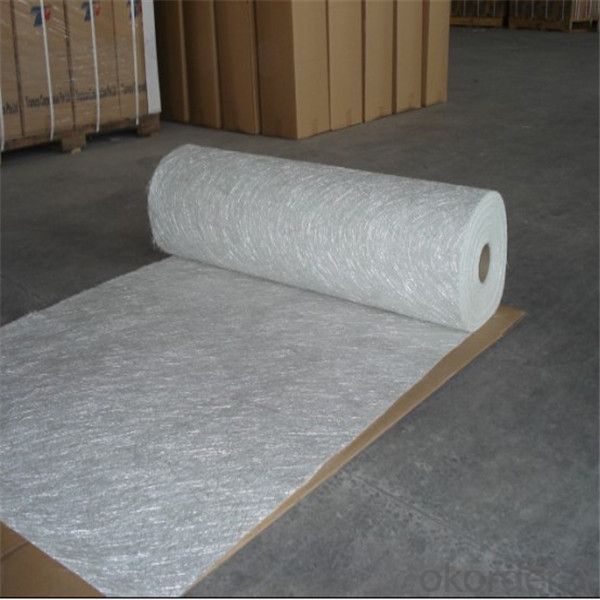
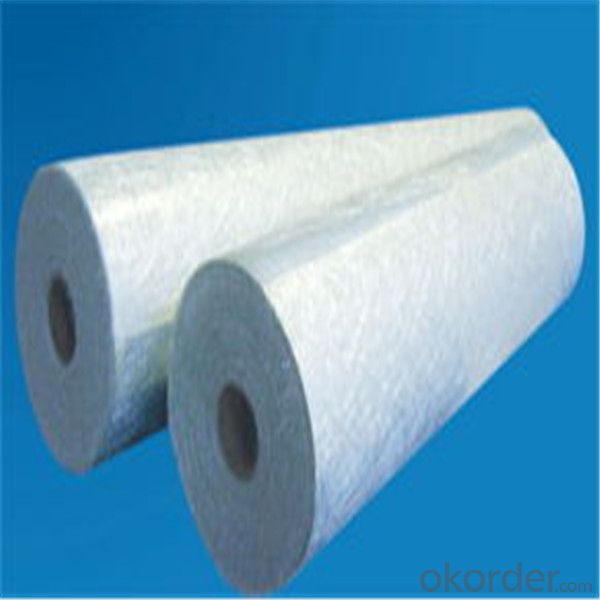

- Q: Is fiberglass chopped strand suitable for insulation materials?
- Yes, fiberglass chopped strand is suitable for insulation materials. It is commonly used in fiberglass insulation products due to its excellent thermal properties and ability to trap air pockets, providing effective insulation against heat and cold. Additionally, fiberglass chopped strand is lightweight, non-combustible, and resistant to moisture, making it an ideal choice for insulation applications.
- Q: Does fiberglass chopped strand improve the weathering resistance of composite materials?
- Composite materials benefit from the use of fiberglass chopped strand, as it enhances their ability to resist weathering. Fiberglass is well-known for its exceptional weathering properties, making it a popular choice for reinforcing composite materials. Chopped strand fiberglass, which consists of small, randomly chopped fibers mixed with a resin matrix, is particularly effective in creating a durable composite material. The inclusion of fiberglass chopped strand in composite materials improves their weathering resistance in multiple ways. Firstly, the fiberglass fibers possess a high resistance to UV radiation, a significant contributor to weathering. These fibers act as a protective barrier, absorbing and dispersing UV rays, thereby preventing damage to the underlying resin matrix. This feature ensures the composite material's structural integrity and appearance are maintained over time. Secondly, fiberglass chopped strand reinforces the composite material, resulting in increased strength and stiffness. This reinforcement enables the composite material to withstand the mechanical stresses associated with weathering, including wind, temperature fluctuations, and exposure to moisture. By enhancing the overall strength of the composite, fiberglass chopped strand helps prevent cracking, warping, and other forms of degradation caused by weathering. Furthermore, fiberglass chopped strand improves the dimensional stability of composite materials. It minimizes dimensional changes caused by variations in temperature, reducing the risk of warping or distortion. This characteristic is particularly valuable in outdoor applications, where composite materials are exposed to a wide range of weather conditions. In conclusion, the addition of fiberglass chopped strand significantly enhances the weathering resistance of composite materials. The high UV resistance, reinforcement, and dimensional stability provided by fiberglass chopped strand enable composite materials to withstand the detrimental effects of weathering, ensuring long-term performance and durability.
- Q: How does the moisture absorption of fiberglass chopped strand impact its performance?
- The moisture absorption of fiberglass chopped strand can have a negative impact on its performance. When fiberglass absorbs moisture, it can weaken its overall strength and structural integrity. Moisture can also lead to delamination or cracking, reducing the effectiveness of the fiberglass in applications such as construction, automotive, or marine industries. Therefore, controlling moisture absorption is crucial for maintaining the performance and durability of fiberglass chopped strand.
- Q: Does fiberglass chopped strand improve the chemical resistance of composite materials?
- The chemical resistance of composite materials can be enhanced through the incorporation of fiberglass chopped strand. Fiberglass possesses exceptional chemical resistance due to its inert nature and lack of reactivity with most chemicals. When utilized as a reinforcement in composite materials, particularly in fiberglass-reinforced plastics (FRPs), the chopped strand contributes to an overall improvement in chemical resistance. By reinforcing the composite matrix, the chopped strand augments its strength and durability. This reinforcement effectively impedes the infiltration and absorption of chemicals, thereby heightening the composite material's resistance to chemical attacks. Moreover, the fiberglass chopped strand can function as a protective barrier, preventing the chemicals from reaching the underlying layers of the composite and causing harm. To further enhance the chemical resistance of composite materials, it is crucial to select the appropriate type and sizing of the fiberglass chopped strand. Different types of fiberglass, such as E-glass, S-glass, and boron fibers, offer varying degrees of chemical resistance. Additionally, the application of a specific sizing or coating to the chopped strand can also bolster its chemical resistance properties. Nevertheless, it is important to acknowledge that while the incorporation of fiberglass chopped strand can enhance the chemical resistance of composite materials, it does not render them completely impervious to all types of chemicals. Certain aggressive chemicals, such as potent acids or bases, may still elicit damage to the composite, even with the presence of fiberglass chopped strand. Consequently, it is imperative to consider the precise chemical environment in which the composite will be utilized and accordingly select suitable materials and reinforcements.
- Q: What are the typical surface finishes available for fiberglass chopped strand?
- Some typical surface finishes available for fiberglass chopped strand include: 1. Silane: This surface finish is one of the most common options for fiberglass chopped strand. It consists of a thin layer of silane coupling agent applied to the surface of the chopped strands. Silane enhances the adhesion between the fiberglass and the resin matrix in composite applications. 2. Polyester: Polyester surface finishes are used to improve the compatibility of chopped strand with polyester resin systems. This finish helps to prevent fiber-to-fiber abrasion during processing and improves the interfacial adhesion between the fiberglass and the resin. 3. Epoxy: Epoxy surface finishes are specifically designed to enhance the bonding of chopped strand with epoxy resin systems. The epoxy coating provides good wet-out properties, improves the strength and stiffness of the composite, and offers excellent resistance to chemicals and environmental factors. 4. Polyurethane: Polyurethane surface finishes are used for applications where enhanced toughness and flexibility are required. This finish offers good adhesion to polyurethane resin systems and enhances the impact resistance of the composite. 5. Acrylic: Acrylic surface finishes are commonly used when transparency or aesthetics are important. This finish provides a clear coating on the chopped strand, allowing the fiberglass to maintain its natural appearance while providing improved compatibility with acrylic resin systems. It is important to note that the choice of surface finish depends on the specific application and resin system being used. Manufacturers often offer a range of surface finishes to cater to different requirements and compatibility needs.
- Q: Is fiberglass chopped strand compatible with epoxy resin?
- Yes, fiberglass chopped strand is compatible with epoxy resin.
- Q: What are the chemical resistance properties of fiberglass chopped strand?
- Fiberglass chopped strand has excellent chemical resistance properties. It is resistant to a wide range of chemicals, including acids, alkalis, and solvents. This makes it a suitable material for various applications where exposure to chemicals is expected.
- Q: Is fiberglass chopped strand easy to handle and process?
- Yes, fiberglass chopped strand is generally considered easy to handle and process. Chopped strand is made up of small, short fibers that are cut to a specified length, usually around 1-3 inches. These fibers are typically mixed with a binder or resin and then used in various applications such as reinforced plastics, composites, and insulation. One of the main advantages of fiberglass chopped strand is its versatility and ease of use. The short length of the fibers makes them easier to handle compared to longer continuous fibers. They can be easily mixed with resins or binders and then molded or formed into desired shapes. The chopped strands can also be easily dispersed into a matrix material, allowing for even distribution of the reinforcement throughout the product. Furthermore, fiberglass chopped strand offers good wet-out properties, meaning that it can easily absorb and bond with resins or other matrix materials. This ensures proper adhesion and strength in the final product. In addition to being easy to handle and process, fiberglass chopped strand also offers several other benefits. It is lightweight, strong, and resistant to corrosion, making it an ideal choice for various applications. It also provides good thermal and electrical insulation properties. Overall, fiberglass chopped strand is a convenient and efficient material to work with. Its ease of handling and processing, combined with its desirable properties, make it a popular choice in industries such as automotive, construction, and aerospace.
- Q: What is glass fiber pultrusion?
- Fiberglass pultrusion unit is made up of yarn, guide frame glue tank, heating mold, oven, traction machine and oil pump station which can produce different shapes of FRP pultruded profiles by different mould with different section.
- Q: What do the surplus of the glass fiber used for?
- The short cut fiber is used in the molding sheet or the molding compound, and also put it in the position of the hand paste glass fiber reinforced plastic with short cut fiber.
Send your message to us
Owens Corning Fiberglass Chopped Strand Mat - Roof Panel High Quality 300gsm
- Loading Port:
- Tianjin
- Payment Terms:
- TT OR LC
- Min Order Qty:
- 100 m.t.
- Supply Capability:
- 10000 m.t./month
OKorder Service Pledge
OKorder Financial Service
Similar products
Hot products
Hot Searches
Related keywords
